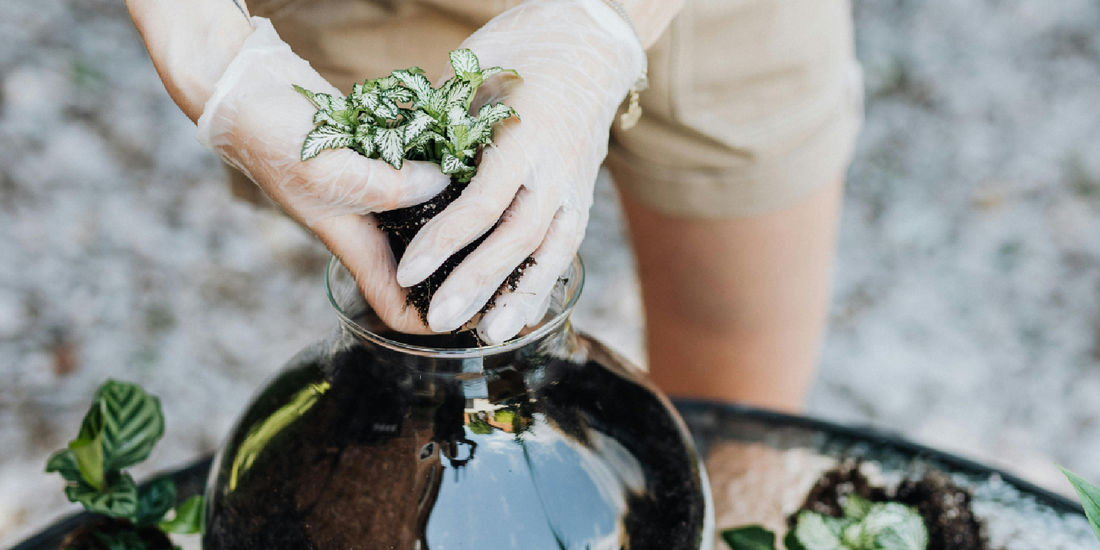
Top Home Decor Colors That Pair with Plants
Share
When it comes to creating a home that feels both stylish and alive, nothing works quite like the combination of plants and the right colors. Plants bring in natural energy, while your choice of home décor colors sets the tone for the entire space. Whether your goal is a modern, calming retreat or a bold, vibrant interior, pairing plants with the right background shades can transform the look and feel of your home.
At amoyls, we believe that home décor is about harmony between design and nature. Our VerdantGlow S-Shaped 8-Tier Plant Shelf with Grow Lights was designed not only to display your greenery beautifully but also to elevate your interior aesthetic. With its sleek curves and modern finish, it provides the perfect stage for experimenting with different color palettes.
In this blog, we’ll explore the top home décor colors that pair best with plants, why they work, and how you can bring them into your own space for a timeless and refreshing look.
1. Crisp White – A Minimalist Canvas for Greenery
Few colors make plants pop quite like crisp white walls or furniture. White serves as the ultimate neutral backdrop, allowing every shade of green to shine through vividly. If you love the look of clean, Scandinavian interiors, this is the color palette for you.
Pair your indoor plants with a white-toned living room or study, and you’ll notice how the leaves feel brighter and more alive. A simple VerdantGlow S-Shaped 8-Tier Plant Shelf with Grow Lights from amoyls against a white wall creates a gallery-like effect, where every plant looks like a curated artwork.
White also enhances natural light, ensuring that the plants not only look their best but also thrive in a bright, airy environment. For those who lean toward minimalism, this color scheme is a timeless choice.
2. Earthy Beige and Taupe – Warmth Meets Organic Living
If your goal is a space that feels cozy, grounded, and welcoming, earthy tones like beige, taupe, and light sand are perfect companions for plants. These shades mirror the natural hues of soil and stone, creating a seamless flow between your décor and the greenery.
Placing your plants on a beige or taupe background highlights their texture while blending them into a warm, calming atmosphere. The amoyls VerdantGlow Plant Shelf looks especially striking in such settings, as its elegant S-shape adds modern flair while still feeling organic.
These tones are ideal for bedrooms, reading nooks, or family areas where comfort and natural balance are a priority.
3. Deep Charcoal and Gray – Modern Sophistication with Contrast
Dark walls can feel intimidating, but when paired with plants, they exude elegance and depth. Charcoal and gray shades create a bold, modern look, making green leaves stand out dramatically.
Imagine a tall 8-tier VerdantGlow Plant Shelf by amoyls standing against a charcoal-gray accent wall. The greenery instantly becomes the focal point, adding a vibrant splash of life to an otherwise moody palette.
Gray also pairs beautifully with metallic or wooden accents, making it a versatile choice for industrial-style lofts, contemporary apartments, or home offices.
4. Forest Green and Olive – A Nature-Inspired Oasis
If you want your home to feel like an extension of nature itself, consider green-on-green pairings. Shades like forest green, olive, or sage create a serene, botanical vibe that enhances the calming effects of your plants.
Contrary to what you might expect, green walls do not overshadow your plants. Instead, they build layers of greenery that make your home feel like a peaceful retreat. The amoyls VerdantGlow Plant Shelf with Grow Lights blends effortlessly into such a palette, adding both structure and elegance.
For bathrooms, dining rooms, or meditation corners, this combination creates a lush, restorative atmosphere.
5. Soft Pastels – A Fresh, Lighthearted Touch
Pastel shades like blush pink, powder blue, lavender, or mint green bring a sense of lightness and charm to interiors. When paired with plants, they create a whimsical and cheerful vibe.
Pastels work particularly well in kitchens, children’s rooms, or creative studios where energy and positivity matter. Place your VerdantGlow S-Shaped Shelf from amoyls against a pastel backdrop, and your plants will radiate a soft, delicate glow under the built-in grow lights.
This palette is perfect for those who want a playful yet calming atmosphere.
6. Rich Terracotta and Rust – A Warm Mediterranean Spirit
Terracotta, rust, and burnt orange tones have long been associated with earthy, sun-drenched interiors. These shades pair beautifully with plants, echoing the natural warmth of clay pots and desert landscapes.
By combining terracotta walls or textiles with lush green plants, you create a Mediterranean-inspired home full of warmth and character. The amoyls VerdantGlow Plant Shelf enhances this look with its vertical display, allowing you to showcase a variety of succulents, vines, or herbs in a cohesive, eye-catching way.
Terracotta tones work well in dining areas, patios, or living spaces where you want to encourage gathering and comfort.
7. Navy and Midnight Blue – Bold Depth and Elegance
Dark blues, such as navy and midnight, add dramatic sophistication to interiors. When paired with plants, these shades create striking contrast and a sense of depth.
Navy walls behind a sleek plant shelf like amoyls’ VerdantGlow S-Shaped 8-Tier Stand give your greenery an almost luminous quality. This palette is particularly powerful in living rooms, home libraries, or offices where you want to balance professionalism with natural vitality.
Deep blue tones also pair beautifully with brass accents and warm wood, elevating the luxurious feel of your home.
8. Warm Mustard and Gold – Vibrant Energy with Green Accents
If you’re looking for an energetic, joyful home, mustard yellow and gold shades offer a bold backdrop for plants. These colors bring sunshine indoors and amplify the natural vitality of green leaves.
Picture a corner with mustard walls, complemented by an amoyls VerdantGlow Plant Shelf filled with cascading pothos or bright ferns. The interplay between warm golden tones and lush greens adds instant cheer and vibrancy to the space.
This palette works well in entryways, kitchens, or social areas where energy and brightness are key.
9. Black Accents – A Modern Frame for Greenery
Black may seem unusual for home décor, but when used as an accent color, it provides a sleek, modern frame that makes plants look incredibly fresh.
Think of black shelves, window frames, or statement furniture pieces paired with lush greenery. The amoyls VerdantGlow Shelf itself works beautifully in spaces with black details, as its shape and design bring softness to an otherwise bold palette.
This look suits urban apartments and chic lofts, where modern design meets organic living.
10. Natural Wood Tones – Timeless Harmony with Plants
Last but not least, nothing pairs more naturally with plants than wood. From light oak to deep walnut, wood tones emphasize the organic beauty of greenery while adding warmth and texture.
Wood complements the amoyls VerdantGlow Plant Shelf, which itself acts as both a functional piece and a stylish décor element. Together, wood and plants create timeless interiors that never go out of style.
Whether your style leans rustic, modern, or bohemian, wood tones always provide a grounding connection between design and nature.
Final Thoughts
Choosing the right colors to pair with your plants is about more than style—it’s about creating an environment where nature and design coexist in harmony. From minimalist whites to bold blues and earthy terracotta tones, every palette has its unique way of enhancing greenery.
With the amoyls VerdantGlow S-Shaped 8-Tier Plant Shelf with Grow Lights, you don’t just display plants—you transform them into design statements that work with your chosen color scheme. By pairing plants with the right décor colors, you elevate both your greenery and your living space into something truly inspiring.
